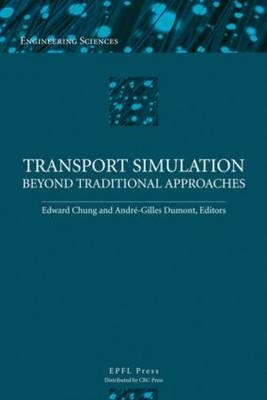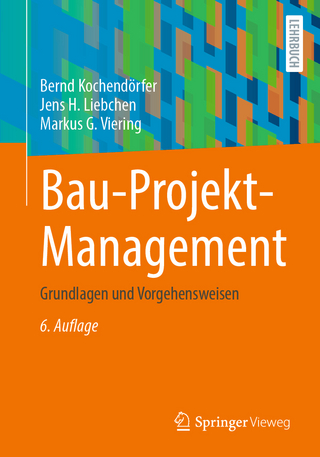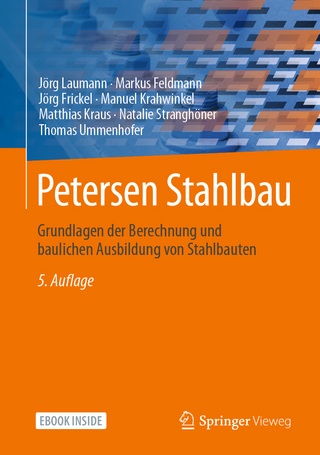
Transport Simulation
Epfl Press (Verlag)
978-1-4200-9509-8 (ISBN)
- Keine Verlagsinformationen verfügbar
- Artikel merken
Preface
About the Authors
MACROSCOPIC TO VEHICLE-EMBEDDED MICROSCOPIC SIMULATION
THE ROLE OF MACROSCOPIC MODELING IN THE SIMULATION, SURVEILLANCE AND CONTROL OF MOTORWAY NETWORK TRAFFIC Markos Papageorgiou, Ioannis Papamichail, Yibing Wang
Introduction
Macroscopic modeling of motorway network traffic
Dynamic traffic assignment (DTA) and route guidance (RG)
Motorway network traffic surveillance
Optimal control of motorway traffic
Conclusions
References.
HYBRID TRAFFIC SIMULATION MODELS: VEHICLE LOADING AT MESO-MICRO BOUNDARIES Wilco Burghout, Haris N. Koutsopoulos
Introduction
Hybrid modeling framework
Modeling traffi c dynamics at meso-micro boundaries
Vehicle loading
Case study
Conclusions
References
SIMULATION OF VEHICLES IN A DRIVING SIMULATOR USING MICROSCOPIC TRAFFIC SIMULATION Johan Janson Olstam
Introduction
The simulation model
Validation
Concluding remarks and future research.
Acknowledgments
References.
LANE CHANGING
INTEGRATED LANE-CHANGING MODELS Moshe Ben-Akiva, Charisma Choudhury, Tomer Toledo
Introduction
Methodology
Integration of MLC and DLC
Explicit target lane choice
Cooperative and forced gap acceptance
Accounting for heterogeneity
Conclusions
Acknowledgments
References
TRAFFIC SIMULATION OF A RURAL 2 + 1 HIGHWAY IN HOKKAIDO Kazunori Munehiro, Toshio Kamiizumi, Mamoru Sasaki, Toshiya Uzuka, Motoki Asano
Introduction
Study Sites
SIM-R Traffi c Micro-simulation Program
Model of Lane-changing Behavior on a Rural 2 + 1 Highway
Simulation Run
Discussion and Conclusions
Acknowledgments
References
MECHANICAL RESTRICTION VS. HUMAN OVERREACTION: THE MODELING OF SYNCHRONIZED TWO-LANE TRAFFIC.Andreas Pottmeier, Christian Thiemann, Andreas Schadschneider, Michael Schreckenberg
Introduction
Model defi nition of the single lane model
Stability of the model
Two-lane traffic
Two-lane model.
Results
Summary and outlook
References
PEOPLE-CENTERED AND RAIL SIMULATION
PEDESTRIAN SIMULATION TAKING INTO ACCOUNT STOCHASTIC ROUTE CHOICE AND MULTIDIRECTIONAL FLOW Miho Asano, Masao Kuwahara, Agachai Sumalee
Introduction
Framework of an integrated dynamic pedestrian route choice and flow model.
Network-based route choice model
Path choice model
Flow propagation model
Application to simple case studies
Conclusions
Acknowledgements
References
F.A.S.T. - FLOOR FIELD AND AGENT BASED SIMULATION TOOL Tobias Kretz, Michael Schreckenberg
Introduction
A model of pedestrian motion
Evacuation exercise in a primary school.
Summary
Appendix A: Equations
Acknowledgments
References
INCORPORATING PATTERN-MATCHING INTO DATA-ORIENTED ACTIVITY SIMULATION USING PROBE PERSON SYSTEMS Eiji Hato, Yasuo Asakura, Masuo Kashiwadani
Background and objectives of study
Preprocessing of location data
Pattern-matching method for location data
Case study
Simulation study
Conclusion
References
SIMULATION OF URBAN RAIL OPERATIONS: MODELS AND CALIBRATION METHODOLOGY. Haris N. Koutsopoulos, Zhigao Wang
Introduction
The simulation model
Calibration methodology
Case study
Conclusions
Acknowledgments
References
SIMULATION APPLICATION
TRAFFIC SIMULATION FOR AN EXPRESSWAY TOLL PLAZA BASED ON SUCCESSIVE VEHICLE TRACKING DATA Ryota Horiguchi, Takahiro Shitama, Hirokazu Akahane, Jian Xing
Introduction
Massive tracking of vehicle trajectories
Modeling of traffi c fl ow in toll plaza
Validation and Case Studies
Case Studies
Conclusions
References
TIME-DEPENDENT ORIGIN-DESTINATION ESTIMATION WITHOUT ASSIGNMENT MATRICES Ramachandran Balakrishna, Moshe Ben-Akiva,Haris N. Koutsopoulos
Introduction
Methodology
Case study I: Synthetic network
Case study II: Los angeles, california
Conclusion
Acknowledgement
References
| Erscheint lt. Verlag | 15.4.2021 |
|---|---|
| Verlagsort | Boca Raton |
| Sprache | englisch |
| Maße | 156 x 234 mm |
| Gewicht | 590 g |
| Themenwelt | Technik ► Bauwesen |
| Technik ► Elektrotechnik / Energietechnik | |
| Technik ► Fahrzeugbau / Schiffbau | |
| Technik ► Umwelttechnik / Biotechnologie | |
| ISBN-10 | 1-4200-9509-9 / 1420095099 |
| ISBN-13 | 978-1-4200-9509-8 / 9781420095098 |
| Zustand | Neuware |
| Haben Sie eine Frage zum Produkt? |
aus dem Bereich


